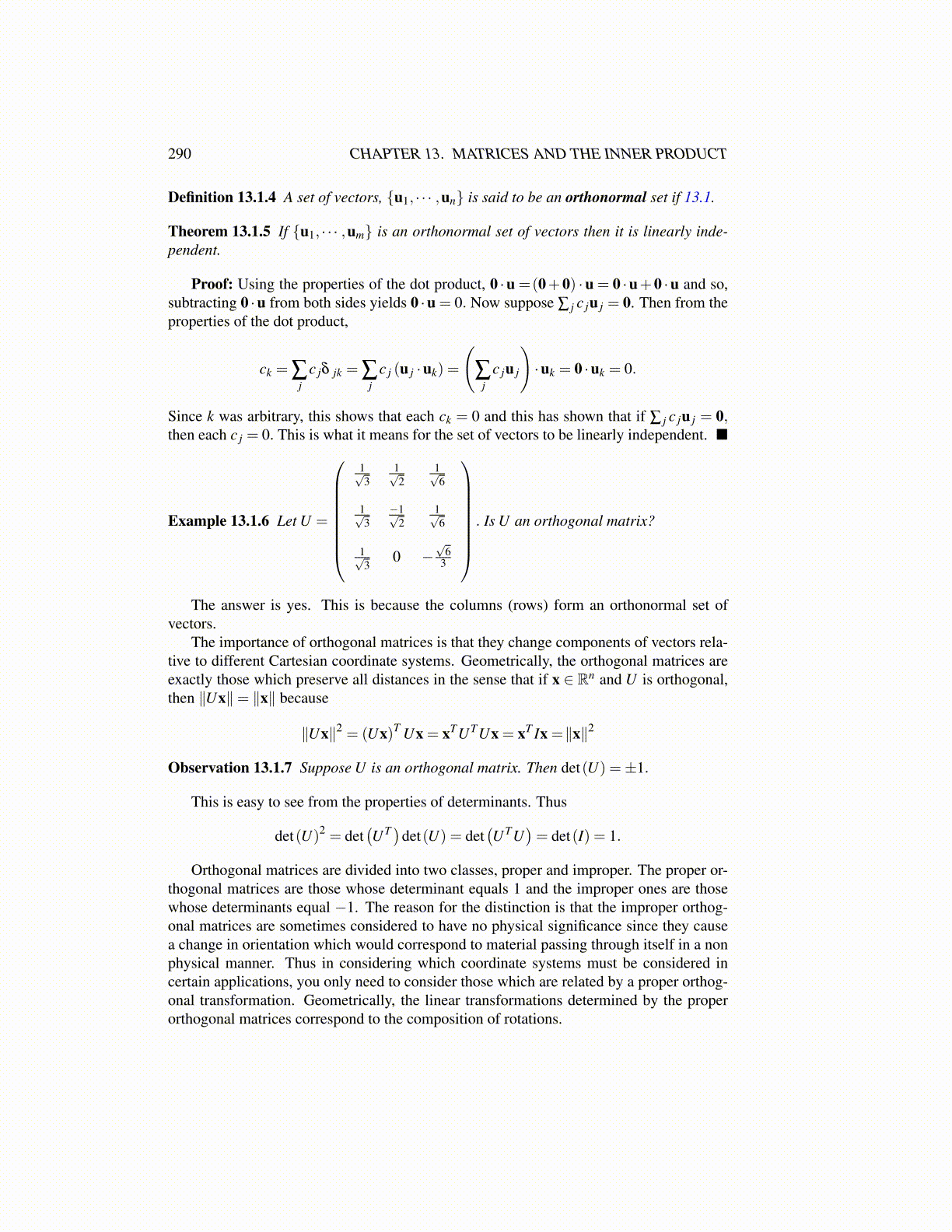
290 CHAPTER 13. MATRICES AND THE INNER PRODUCT
Definition 13.1.4 A set of vectors, {u1, · · · ,un} is said to be an orthonormal set if 13.1.
Theorem 13.1.5 If {u1, · · · ,um} is an orthonormal set of vectors then it is linearly inde-pendent.
Proof: Using the properties of the dot product, 0 ·u =(0+0) ·u = 0 ·u+0 ·u and so,subtracting 0 ·u from both sides yields 0 ·u = 0. Now suppose ∑ j c ju j = 0. Then from theproperties of the dot product,
ck = ∑j
c jδ jk = ∑j
c j (u j ·uk) =
(∑
jc ju j
)·uk = 0 ·uk = 0.
Since k was arbitrary, this shows that each ck = 0 and this has shown that if ∑ j c ju j = 0,then each c j = 0. This is what it means for the set of vectors to be linearly independent. ■
Example 13.1.6 Let U =
1√3
1√2
1√6
1√3
−1√2
1√6
1√3
0 −√
63
. Is U an orthogonal matrix?
The answer is yes. This is because the columns (rows) form an orthonormal set ofvectors.
The importance of orthogonal matrices is that they change components of vectors rela-tive to different Cartesian coordinate systems. Geometrically, the orthogonal matrices areexactly those which preserve all distances in the sense that if x ∈ Rn and U is orthogonal,then ∥Ux∥= ∥x∥ because
∥Ux∥2 = (Ux)T Ux = xTUTUx = xT Ix =∥x∥2
Observation 13.1.7 Suppose U is an orthogonal matrix. Then det(U) =±1.
This is easy to see from the properties of determinants. Thus
det(U)2 = det(UT )det(U) = det
(UTU
)= det(I) = 1.
Orthogonal matrices are divided into two classes, proper and improper. The proper or-thogonal matrices are those whose determinant equals 1 and the improper ones are thosewhose determinants equal −1. The reason for the distinction is that the improper orthog-onal matrices are sometimes considered to have no physical significance since they causea change in orientation which would correspond to material passing through itself in a nonphysical manner. Thus in considering which coordinate systems must be considered incertain applications, you only need to consider those which are related by a proper orthog-onal transformation. Geometrically, the linear transformations determined by the properorthogonal matrices correspond to the composition of rotations.